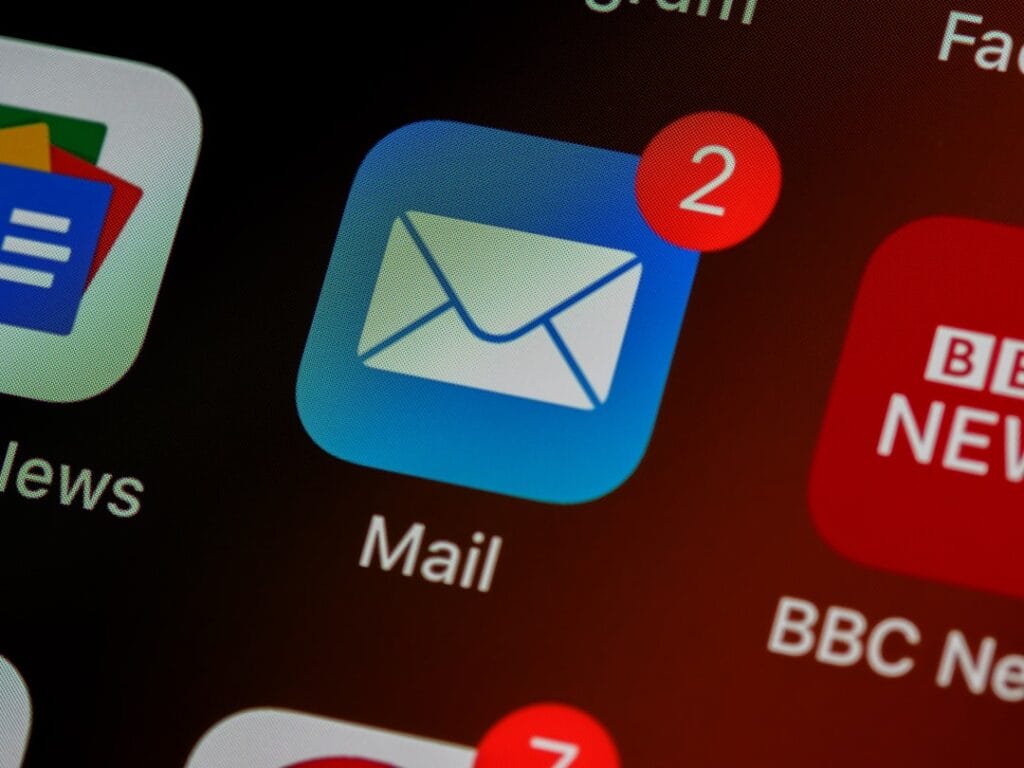Saviez-vous que Google Maps est un outil puissant qui peut vous aider à atteindre votre public cible et à générer des leads de haute qualité ?
Rappelons tout d’abord quelques avantages pour les entreprises locales d’utiliser Google Maps.
En créant et en optimisant une fiche Google My Business, vous apparaîtrez dans les résultats de recherche Google et sur Google Maps lorsqu’un utilisateur recherche des produits ou services B2B dans votre région.
L’optimisation de la fiche Google My Business avec des mots-clés pertinents et des informations précises peut ainsi améliorer votre classement dans les résultats de recherche locaux, ce qui vous rend plus visible par les clients potentiels.
Aussi, une fiche Google My Business complète et à jour avec des avis positifs et des photos de haute qualité peut également renforcer la crédibilité de l’entreprise et la confiance des clients potentiels.
De plus, Google Maps permet de cibler leurs annonces et leurs efforts de marketing en fonction de l’emplacement, du secteur d’activité, des mots-clés et d’autres critères, garantissant ainsi qu’elles atteignent les prospects les plus pertinents.
Google Maps permet également d’interagir avec les clients potentiels en répondant aux avis, en publiant des photos et des mises à jour, et en encourageant les interactions directes.
Bien plus qu’une carte numérique, Google Maps est aussi et surtout une mine d’informations ! Elle constitue une excellente base de données à partir de laquelle créer votre liste de prospection B2B.
Pour exploiter pleinement le potentiel de Google Maps pour la génération de leads B2B, les entreprises peuvent mettre en œuvre les stratégies suivantes.
Stratégie 1 : Optimiser la fiche Google My Business
Voici 5 astuces pour optimiser votre fiche Google My Business :
1 – Complétez toutes les informations de la fiche
Assurez-vous que la fiche Google My Business de l’entreprise est complète et à jour, y compris le nom, l’adresse, le numéro de téléphone, les horaires d’ouverture, le site Web, la description de l’entreprise, les photos et les catégories pertinentes.
2 – Utilisez des mots-clés pertinents
Intégrez des mots-clés pertinents dans le nom de l’entreprise, la description et les autres champs de la fiche pour améliorer le classement de l’entreprise dans les recherches.
3 – Ajoutez des photos de haute qualité
Publiez des photos de haute qualité de l’entreprise, de ses produits ou services, et de son équipe pour rendre la fiche plus attrayante et informative.
4 – Encouragez les avis
Encouragez les clients satisfaits à laisser des avis positifs sur la fiche Google My Business de l’entreprise. Répondez à tous les avis, y compris les négatifs, de manière professionnelle et courtoise.
5 – Gérez les mises à jour
Publiez régulièrement des mises à jour sur la fiche Google My Business de l’entreprise pour informer les clients des événements, des promotions et des nouvelles offres.
➡️ Cliquez ici pour plus de détails sur comment optimiser votre fiche Google My Business
Stratégie 2 : Utiliser la recherche Google Maps
La fonction de recherche de Google Maps peut également vous servir pour trouver des leads B2B.
1 – Effectuez des recherches par mots-clés
Utilisez la plateforme pour rechercher des entreprises B2B dans votre région qui correspondent à votre cible. Analysez leurs fiches et leurs stratégies pour vous inspirer.
2 – Explorez les filtres de recherche
Utilisez les filtres de recherche avancés de la cartographie numérique pour affiner vos recherches par secteur d’activité, quartier, heures d’ouverture et autres critères.
3 – Identifiez les concurrents
Identifiez vos concurrents locaux et analysez leurs fiches Google My Business pour identifier les opportunités d’amélioration de votre propre fiche.
Stratégie 3 : Exploiter les annonces Google Maps
Vous pouvez exploiter les annonces Google Maps de 3 manières :
1 – Créez des campagnes d’annonces ciblées
Créez des campagnes d’annonces Google Maps ciblées pour atteindre des clients potentiels dans votre région en fonction de leur emplacement, de leurs intérêts et d’autres critères.
2 – Utilisez des appels à l’action clairs
Incluez des appels à l’action clairs dans vos annonces Google Maps pour inciter les clients potentiels à visiter votre site Web, à vous appeler ou à vous contacter directement.
3 – Suivez les performances des annonces
Surveillez les performances de vos annonces Google Maps et apportez des ajustements en fonction des résultats pour optimiser votre retour sur investissement (ROI).
Stratégie 4 : Extraire des leads à partir de Google Maps
Pour scrapper des données de prospects B2B à partir de Google Maps, vous avez généralement 2 options.
1 – Méthodes d’extraction manuelle de leads
Bien que plus chronophage, l’extraction manuelle de leads peut être efficace pour les petites entreprises ou pour celles qui souhaitent un plus grand contrôle sur le processus. Cela implique de rechercher manuellement des entreprises sur Google Maps, de copier et coller leurs informations dans une feuille de calcul ou un autre outil de gestion des leads.
2 – Utiliser un outil de scraping de Google Maps comme Magileads
Si vous recherchez un moyen pratique et efficace de générer des leads qualifiés à partir de Google Maps, vous pouvez utiliser des outils et des techniques d’extraction de données. Cependant, il est important de noter que l’utilisation de ces outils doit être conforme aux conditions d’utilisation de Google et respecter la confidentialité des données.
Pour créer votre liste de prospection à partir de Google Maps dans Magileads, il n’y a rien de plus simple.
Voici la vidéo explicative :
Bonnes pratiques pour la génération de leads à partir de Google Maps
Il est important de noter et de respecter ces bonnes pratiques pour réussir à générer des leads à partir de Google Maps.
1 – Respectez les conditions d’utilisation de Google
Assurez-vous de respecter les conditions d’utilisation de Google lors de l’utilisation de Google Maps pour la génération de leads. Cela inclut de ne pas dépasser les limites de requêtes et de ne pas utiliser de méthodes d’extraction de données qui pourraient nuire aux serveurs de Google.
2 – Concentrez-vous sur la qualité des leads
Ne vous contentez pas de générer le plus grand nombre possible de leads. Concentrez-vous plutôt sur l’identification de leads de haute qualité qui sont susceptibles d’être intéressés par vos produits ou services.
3 – Enrichissez vos données
Une fois que vous avez extrait des leads à partir de Google Maps, enrichissez-les avec des informations supplémentaires provenant d’autres sources, telles que les réseaux sociaux et les sites Web d’entreprises. Cela vous permettra de mieux connaître vos prospects et de les cibler avec des messages plus pertinents.
NB : Magileads intègre une fonctionnalité vous permettant d’enrichir automatiquement votre base en, y comblant les lacunes éventuelles.
4 – Respectez la confidentialité des données
Assurez-vous de respecter la confidentialité des données des entreprises et des personnes que vous trouvez sur Google Maps. N’utilisez pas ces informations à des fins illégales ou contraires à l’éthique.
Quelques points à retenir
- Il est important de se rappeler que Google Maps est conçu pour un usage public et non pour l’extraction de données en masse. L’utilisation abusive de Google Maps pour l’extraction de données peut entraîner des sanctions, telles que le blocage de votre adresse IP.
- Il existe des services tiers qui peuvent vous aider à générer des leads à partir de Google Maps. Ces services peuvent être payants, mais ils peuvent vous faire gagner du temps et des efforts si vous n’avez pas les compétences ou les ressources nécessaires pour extraire des données vous-même.
- Assurez-vous de toujours vérifier les lois et réglementations locales avant de collecter des données sur des entreprises ou des personnes.
Finalement, générer des leads à partir de Google Maps peut être un moyen efficace et rentable d’atteindre de nouveaux clients pour les entreprises B2B locales. En mettant en œuvre les stratégies et les bonnes pratiques décrites dans ce guide, les entreprises peuvent maximiser le potentiel de Google Maps pour générer des leads qualifiés et stimuler leur croissance.





